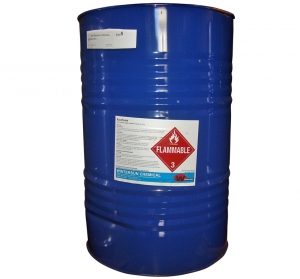Uncategorized
Unleash the Power of Acetone: Say Goodbye to Stubborn Glue
Glue can be a formidable opponent when it comes to its removal, often leaving behind stubborn residue that seems impossible to get rid of. However, there is a secret weapon that has been quietly making waves in the world of adhesive removal: acetone.
This powerful solvent has shown remarkable effectiveness in dissolving various types of glue, making it a go-to solution for many. But how does acetone work its magic, and what are the precautions one must take when using it?
In this discussion, we will uncover the untapped potential of acetone in saying goodbye to stubborn glue, revealing its secrets and providing practical tips for safe and effective usage. So, prepare to be amazed by the unleashed power of acetone and bid farewell to your adhesive woes.
Key Takeaways
- Different types of glue require different solvents for removal
- Acetone can effectively dissolve and remove cyanoacrylate glue
- Acetone may not be effective on all types of glue, such as rubber cement or hot glue
- Safety precautions should be taken when using acetone, including proper ventilation and protective equipment
Types of Glue and Removal Methods
Different types of glue require specific solvents for effective removal. When choosing appropriate solvents, it is important to consider the impact of the glue on different surfaces.
Water-based glues like Pritt Stick can be easily removed with water, while other glues such as rubber cement, hot glue, cyanoacrylate, and impact glue require specific solvents for removal. Acetone, for example, can remove cyanoacrylate but not rubber cement or hot glue.
It is crucial to know the type of glue being dealt with in order to select the appropriate solvent for removal. Using the wrong solvent can potentially damage the surface or be ineffective in removing the glue.
Therefore, understanding the nature of the glue and its impact on different surfaces is essential for successful glue removal.
Acetone’s Effectiveness in Removing Glue
When considering the removal of glue, it is crucial to understand the effectiveness of acetone in dissolving specific types of glue and its impact on different surfaces.
Acetone is a powerful solvent that can effectively dissolve certain types of glue, such as cyanoacrylate, commonly known as superglue. However, it may not be effective in removing other types of glue, such as rubber cement or hot glue.
It is important to identify the type of glue before attempting to remove it with acetone. In some cases, choosing alternative solvents may be necessary to prevent damage to delicate surfaces.
Additionally, proper precautions should be taken to prevent glue residue and ensure the safety of the user.
Step-by-step Guide for Using Acetone
To effectively remove glue using acetone, follow these step-by-step instructions:
- Choose the right acetone brand: Ensure you purchase a high-quality acetone brand from a reputable supplier. This ensures the effectiveness of the product in removing glue.
- Precautions for using acetone on plastic surfaces: Acetone can potentially damage plastic surfaces, so it is important to take precautions. Test a small, inconspicuous area of the plastic surface before applying acetone. If there is no adverse reaction, proceed with caution and use a minimal amount of acetone.
- Follow the removal process: Soak a cotton wool ball in acetone and dab it onto the glue. Allow the acetone to sit on the glue for a few minutes to soften it. Then, wipe or scrape away the softened glue. Repeat the process if necessary until all the glue is gone.
Safety Precautions With Acetone
In order to ensure safe usage of acetone, it is important to take proper safety precautions.
First and foremost, proper ventilation in the work area is essential to prevent the accumulation of fumes.
Additionally, it is advisable to wear protective equipment such as gloves, a face mask, and goggles to minimize exposure to acetone. This will provide respiratory protection and prevent any irritation to the air passages.
Furthermore, it is crucial to remove any heat and ignition sources from the vicinity to reduce the risk of fire hazards.
Having a fire extinguisher readily available is also recommended as an added precaution.
Risks and Tips for Delicate Surfaces
Careful consideration must be given to delicate surfaces when using acetone to remove glue, as there is a risk of potential damage to materials such as leather, varnished wood, and clothing. To prevent damage and safely remove glue from delicate surfaces, follow these tips:
- Protective equipment for acetone use: When working with acetone, it is important to wear protective equipment such as gloves, a face mask, and goggles. This will help prevent any contact with the skin or inhalation of fumes.
- Testing on inconspicuous areas: Before applying acetone to the entire surface, test it on an inconspicuous area to ensure it does not cause any damage or discoloration. This will help you assess its impact on the material.
- Alternative cleaning methods: Consider trying alternative cleaning methods, such as diluted acetone or soap and water, before using pure acetone on delicate surfaces. These milder solutions may be enough to remove the glue without causing any harm.
Choosing the Right Acetone for Glue Removal
When selecting the appropriate acetone for removing glue, it is crucial to consider the specific type of glue and its compatibility with different formulations of acetone. Not all acetones are created equal, and using the wrong one can lead to ineffective glue removal or even damage to the surface being cleaned. It is important to check the label of the acetone product and ensure that it is suitable for the type of glue you are trying to remove. Additionally, it is essential to store acetone properly to maintain its effectiveness. Acetone should be stored in a cool, dry place away from direct sunlight and sources of heat or ignition. Its shelf life is typically around one to two years. It is also important to be aware of the potential health hazards of acetone, such as skin and eye irritation, and to take necessary precautions when using it, such as wearing protective equipment and ensuring proper ventilation in the work area.
| Acetone Type | Suitable for Glue Type | Storage and Shelf Life |
|---|---|---|
| Acetone A | Cyanoacrylate glue | Store in a cool, dry place away from sunlight and heat. Shelf life: 1-2 years. |
| Acetone B | Rubber cement | Not suitable for removing rubber cement. |
| Acetone C | Hot glue | Not suitable for removing hot glue. |
| Acetone D | Water-based glue | Not suitable for removing water-based glue. |
Alternative Solvents for Stubborn Glue
When faced with stubborn glue that is resistant to acetone, it is necessary to explore alternative solvents for effective removal. Here are three alternative solvents that can be used to remove stubborn glue:
- Vinegar: Vinegar is a versatile and eco-friendly option for removing glue. Its acidic nature helps to break down the adhesive properties of the glue. Simply soak a cloth or sponge in vinegar and apply it to the glue. Allow it to sit for a few minutes, then wipe away the softened glue.
- Rubbing Alcohol: Rubbing alcohol is another effective alternative solvent for stubborn glue. Its high alcohol content helps to dissolve the glue and make it easier to remove. Apply a small amount of rubbing alcohol to a cloth or cotton ball and gently rub the glue until it loosens and comes off.
- Lemon Juice: Lemon juice is a natural solvent that can effectively break down glue. The citric acid in lemon juice helps to weaken the adhesive properties of the glue. Squeeze fresh lemon juice onto the glue and let it sit for a few minutes. Then, use a cloth or sponge to scrub away the softened glue.
These alternative solvents provide eco-friendly options for removing stubborn glue when acetone is not effective.
Removing Acetone Stains and Residue
To effectively remove acetone stains and residue, proper cleaning techniques must be employed. When working with delicate surfaces, it is important to take extra precautions to prevent acetone stains.
Before using acetone, it is advisable to try alternative cleaning methods to avoid potential damage. If using acetone is necessary, it is recommended to test it on an inconspicuous area first. Diluted acetone or a mixture of soap and water can be used to remove acetone stains from delicate surfaces.
It is important to gently dab the stained area with a soft cloth or cotton ball soaked in the mixture, and then rinse with clean water. In some cases, retouching the surface may be required to restore its original appearance.
Conclusion
In conclusion, acetone is a powerful solvent that can effectively remove various types of glue. Its ability to dissolve polymers and break down molecular bonds makes it a valuable tool in tackling stubborn adhesives.
However, it is important to take precautions and ensure safety during the removal process. By following a step-by-step guide and considering alternative solvents, one can successfully say goodbye to stubborn glue with the unleashed power of acetone.


